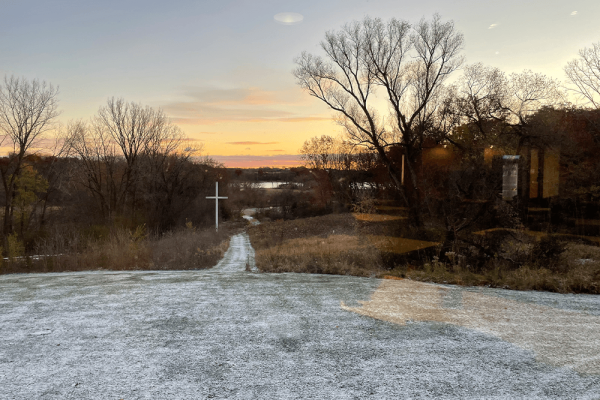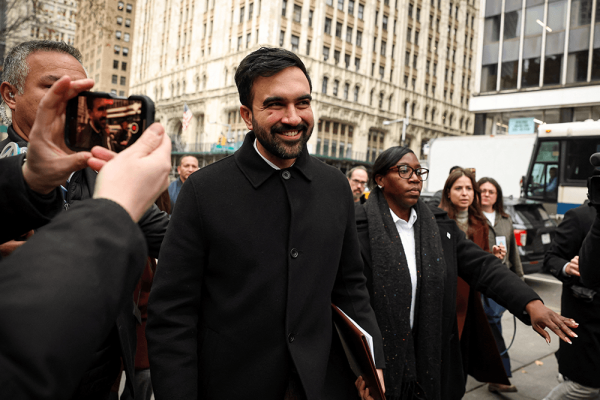In 2008, Phyllis Tickle cast the North American church as participating in an every-500-hundred-years rummage sale — a predictable cultural and religious cycle stretching back in various places over millennia. As the focus groups and strategic planning committees of American churches continue to fret about church attendence and overcorrect with programming changes, the late Tickle’s teachings, echoing the Rt. Rev. Mark Dyer, call out: We are not becoming extinct, as much as we are changing.
This is resurrection talk for resurrection people, if and as the church allows it to be — a season of purging, not perishing; experimenting, not expiring; and redefining, not defying, what it means to be Christian in this world.
New manifestations of following Jesus have emerged over the last two decades, pushing and crossing traditional lines with critical thinking and a resolve to take the words of Jesus literally. Tickle explored some of them in her book The Great Emergence; other examples can be found in works such as David Janzen’s The Intentional Christian Community Handbook. Missional communities, intentional communities, New Monastic communities, Emergent communities, and dozens more have formed values that vary in focus and function, while keeping a common thread of loving God and loving neighbor at their center.
A running question fuels this development: How are we today to be humans who follow Jesus? What today is the way of the Church?
For a decade, I have wrestled with this question, both as a staff member of three (funding-struggling) faith organizations and as a founder and member of a (failed) New Monastic Intentional Community. When I took all of my eggs out of the deteriorating "institutional church" basket and moved them over to be cradled by the still infant-like understanding of New Monasticism, I found that the wine skins were not yet ready to hold the weight of my desperate idolization. I was desperate to find or make something concrete and established when the very nature of New Monastic exploration was — is — still just that: new.
Ten years ago, just like today, there were kinks to be worked out and very few blueprints floating around, outside of wisdom from the monks of old and stories to piece together from other efforts happening around the globe. Where does the money come from? Who makes the rules? What disciplines are we to prioritize? How do and don’t our practices fit in with the society that surrounds us? Is it sustainable? Who holds us accountable? New Monasticism, like the rest of Emergent Christianity, was an unnervingly young and fluid concept to enter into after walking away from the weathered, calcified structure of its predecessor.
And when we closed the doors of our community house, I was consumed with compulsion to throw out both baby and bathwater and count the Church as hopeless, without options.
But that is the response of someone who does not recognize our collective calling to be the tension dwellers, rather than problem solvers, of this time.
Phyllis Tickle predicted that it would take us — as it has taken others elsewhere — one hundred years to shake it all out once more, to find a new normal as humans, as Christians, as people who are relearning how to love and recognize the image of God in one another. And if this is true, then we are still merely at the beginning of this epoch, marked by the rise of global internet access. We are in the "chaos" phase that every artist knows well, where the supplies are strewn about and the grief that is to be our painting’s subject has yet to be fully deconstructed. To me, there is hope in this reminder — hope that maybe we have been created to live in the muddled period of becoming, committing ourselves to trial and error and to sifting. It seems we have been offered the unique opportunity of experimenting with several ways of existing, rather than finding, fossilizing, and marketing the way in our lifetime.
In this understanding, those disheartened by the continuous struggle of the Church to once again find its stride may embrace the reminder of persistence. We are in the in-between; we may be here for a while; and we may have been specifically designed and positioned for this season of growth and change as Christ’s body. Moses knew his people would land in a place he would never see, but he got them out of where they’d once been, and set them on a long, tedious, creativity- and mistake-filled path of working it out. It may be that this is our story as well.
Let us as tension dwellers commit to continuing to try and fail, sift and start over, dream and hope, despite the odds that swirl around us. Let us commit to the becoming,even if we will never see the fullness of the being. Let us recognize how special this time in church history, and our participation in it, truly is.
Got something to say about what you're reading? We value your feedback!







